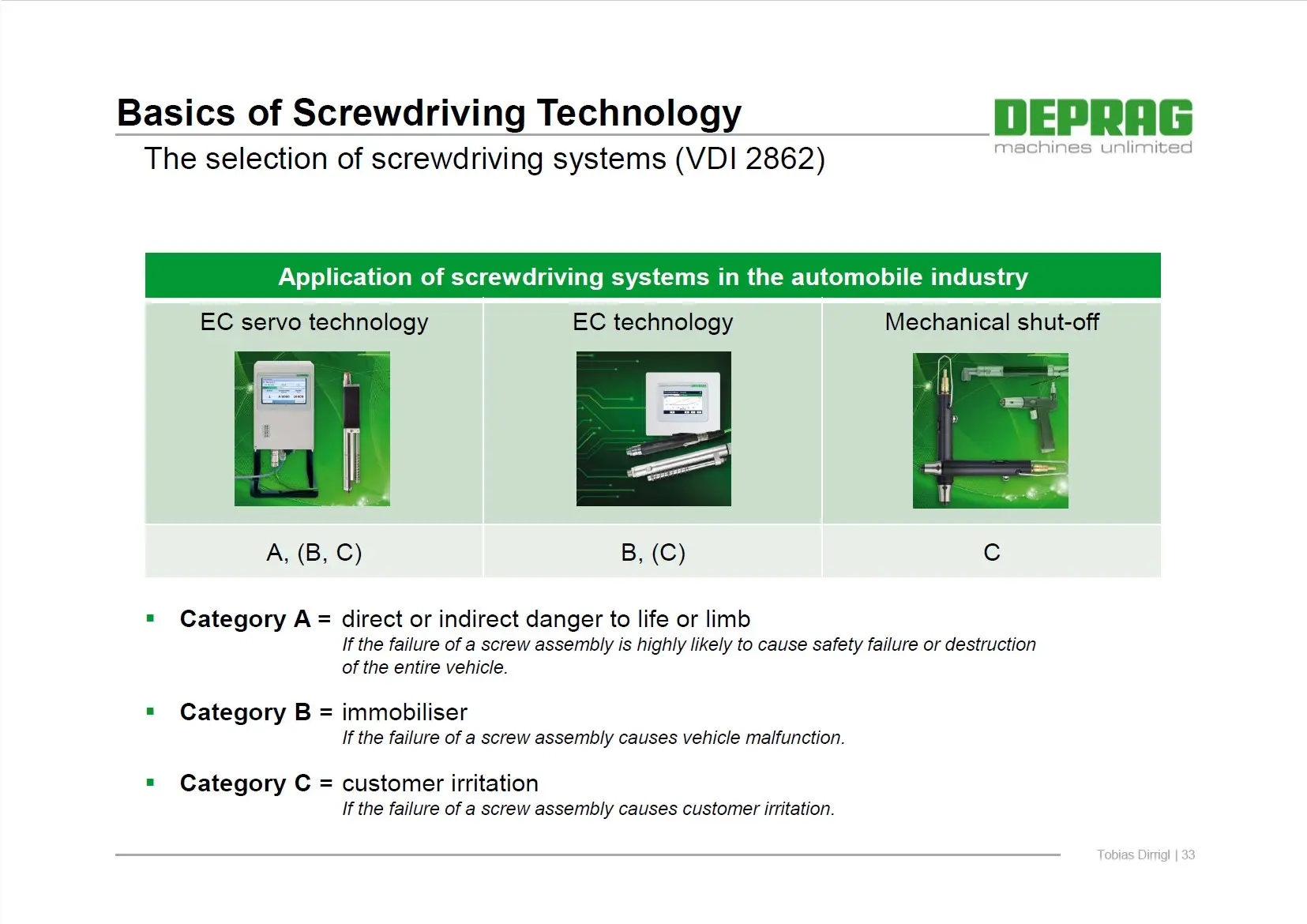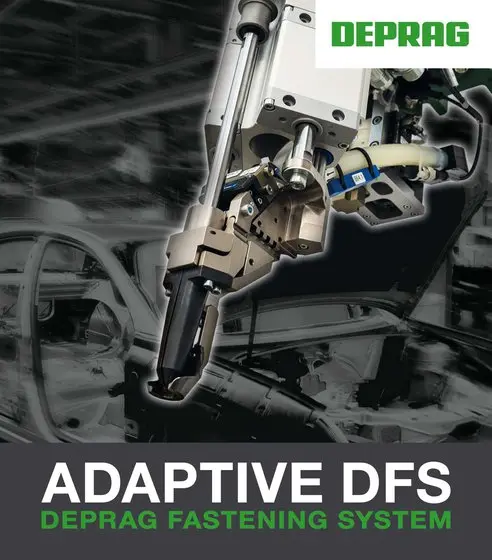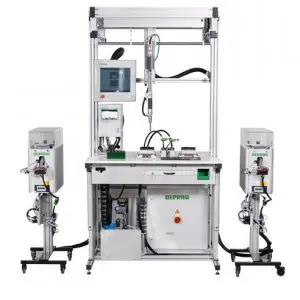Screw driver Technology Selection



Almost every component of a product has a specification with an acceptable tolerance. The component will have functional and physical attributes that can be measured and specified. If the attributes are outside of the predetermined tolerance it will be rejected.
Screw joints are integral parts of any assembly. Loose or stripped screws at best can cause annoying rattles and in a worst case they can cause complete failure of a product. In any case, the long term costs of warranty repairs and harm to a brand will far outweigh the short term costs of correctly designing and specifying the torque, accuracy and type of screwdriving equipment for your assembly line.

Manual Screw Driving station with Automatic screw feeding and position control
Quite often we still find that many manufacturers do not have a torque specification for each of their screw assemblies, let alone calibrate their precision screwdriver or monitor their accuracy. Many screwdrivers in production have no torque control or are easily adjusted by the production line workers, while others are simply not checked until something goes wrong (oops too late!!).
“As long as the screw is not stripped”, “As long as a screw is there” are phrases our sales engineers often hear when they ask about the torque specifications. Unfortunately that is not good enough these days. There is no way of knowing if a screw is stripped after assembly unless there is some kind of supervision system or the operators care enough to reject the part as it happens. Just because an inspector sees that all of the screws are assembled does not mean that they are all assembled to torque or not stripped. Testing every screw after assembly with a torque wrench is a waste of time and inaccurate, especially when you can get screwdrivers that assemble screws more accurately than any subsequent testing method.
Customers expect more from Australian manufactured goods. You can imagine the disappointment of a customer who has chosen Australian made products and finds that it is faulty because of something as simple as a stripped or loose screw? He would probably think he may as well have bought the Chinese product for a fraction of the price. What if that company was one of your main export customers?
What’s the solution?
We recommend that manufacturers:
How accurate do the screwdrivers need to be?
This depends on the tolerance that is required. Generally industry expects a failure rate of better than 0.6 failures per million assemblies. If the screwdriver is capable of a standard deviation (accuracy) of less than ±3% with a torque tolerance of ±10% of the target torque, then we can safely meet the failure rate of 0.6 per million. If the screwdriver can achieve an SD of better than ±1% (for example our EC Servo Screwdrivers), then a tolerance of ±5% is possible.
We have over 20 years experience in helping customers with screw assembly productivity and quality control issues. Please don’t hesitate to contact us for advice on your applications.